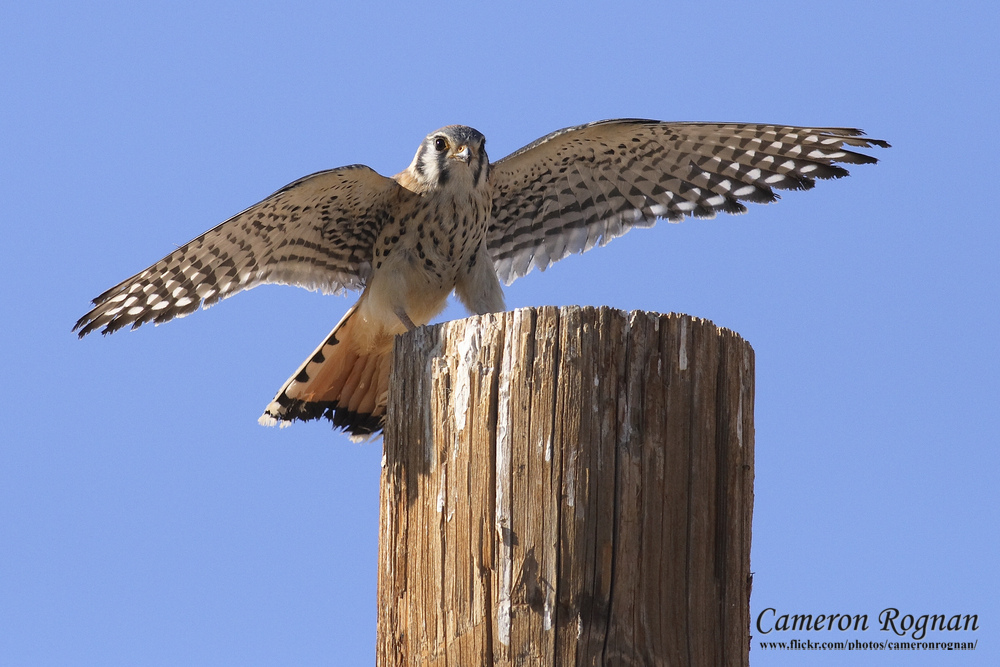American Kestrel
(Falco sparverius)
Drive down any country road and you’re likely to spot an American kestrel, the smallest, most common and most colorful of all North American falcons. With an estimated population of over one million breeding pairs north of Mexico alone, it is the most readily seen bird of prey on this continent. Kestrels like other falcons have small heads, long wings that taper to a point and streamlined bodies; a build meant for speed. The name falcon comes from the Latin falx, meaning “sickle,” and refers to the curved shape of their wings in flight.
This diminutive, three to four ounce, robin-sized falcon is easily distinguished by its beautiful and colorful markings. The bold pattern on its head, a rusty crown bordered in steel-blue and framed by white cheek patches banded with broad vertical black stripes, is certain to catch one’s eye. Males also sport striking blue wings which contrast sharply with rufous colored backs, tails and breast feathers. Females, just slightly less bright, have cinnamon colored wings and buff colored breasts spotted with brown.
American kestrels, are easy to spot not only because they are so brightly colored, but because of their preference for perching atop trees, fence posts, utility poles and telephone wires from where they scope out their prey. They are also famous for their ability to hover in the sky. With wings rapidly beating and fanned tails depressed, they float skillfully aloft before making a quick slanting stoop to capture their kill. Although the kestrel’s species name is spraversius for “sparrow,” and formerly they were called sparrow hawks, songbirds are not the kestrels main prey. Instead grasshoppers and mice are their favorite prey. They’re quite versatile though and will eat bats, dragonflies, snakes and frogs as well.
Kestrels are unique in that they are the only North American falcons or hawks that nest in cavities. They use not only natural cavities and woodpecker holes but eaves of buildings and barns, and nest boxes too. Kestrels mate for life and, in Utah, pairs begin courtship in April. No actual nest is constructed and the four to five brown-blotched, whitish eggs are laid directly on the bottom of the chosen cavity. The female does most of the incubation which lasts about 30 days, but the male provides food on a regular basis.
After hatching, the young remain in the nest for an additional 30 days, and by another two weeks they are on their own. Kestrel nest boxes can be popular conservation projects for youth but they must be carefully maintained and cleaned each year. If you build one and put it near an open field with plenty of prey, you’re sure to be more than pleasantly rewarded by the wondrous antics of a breeding pair and their young.
